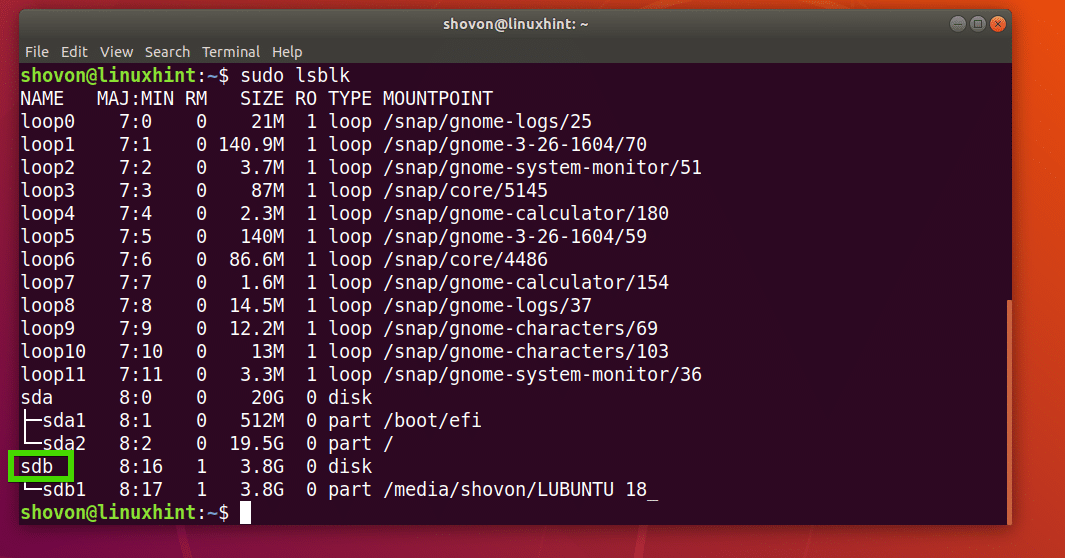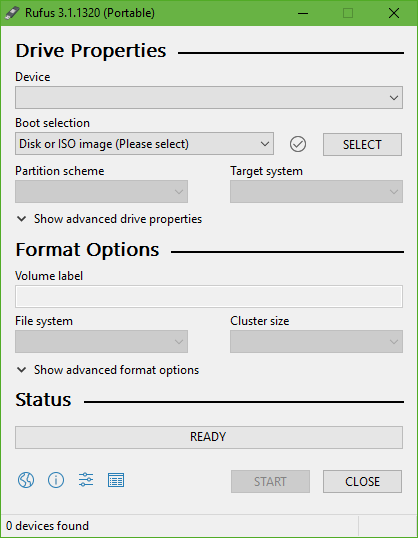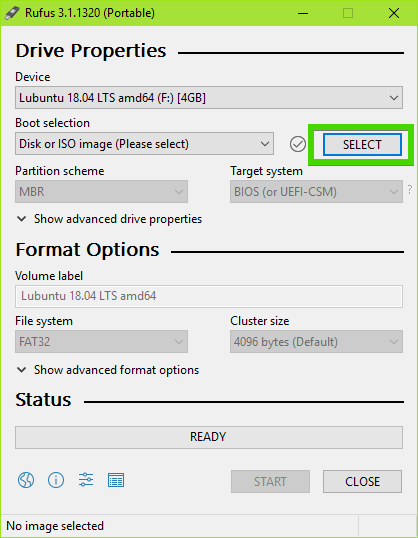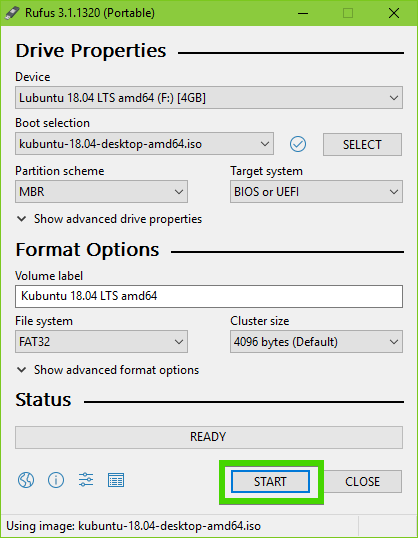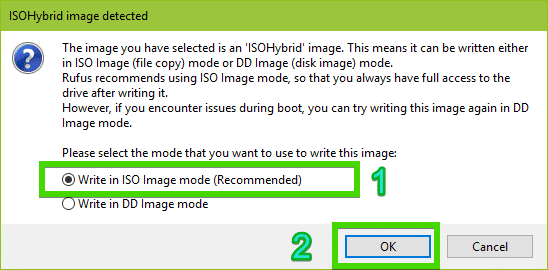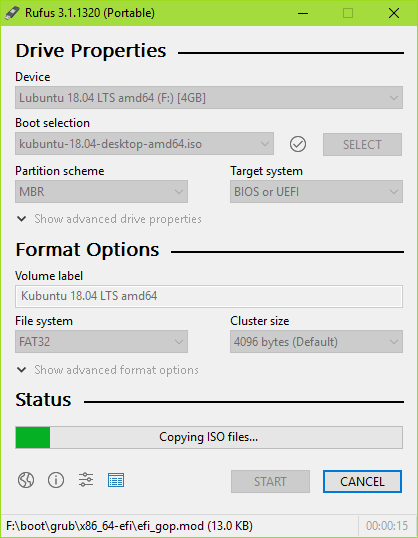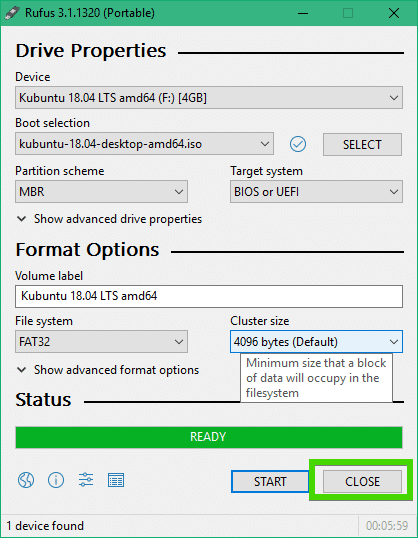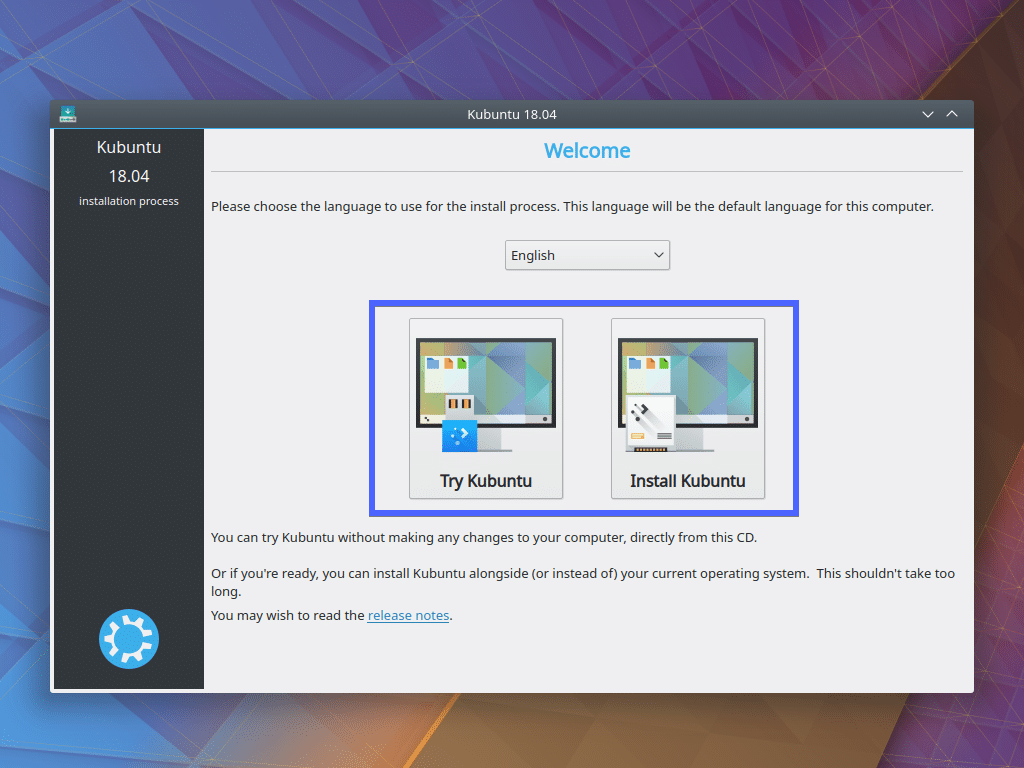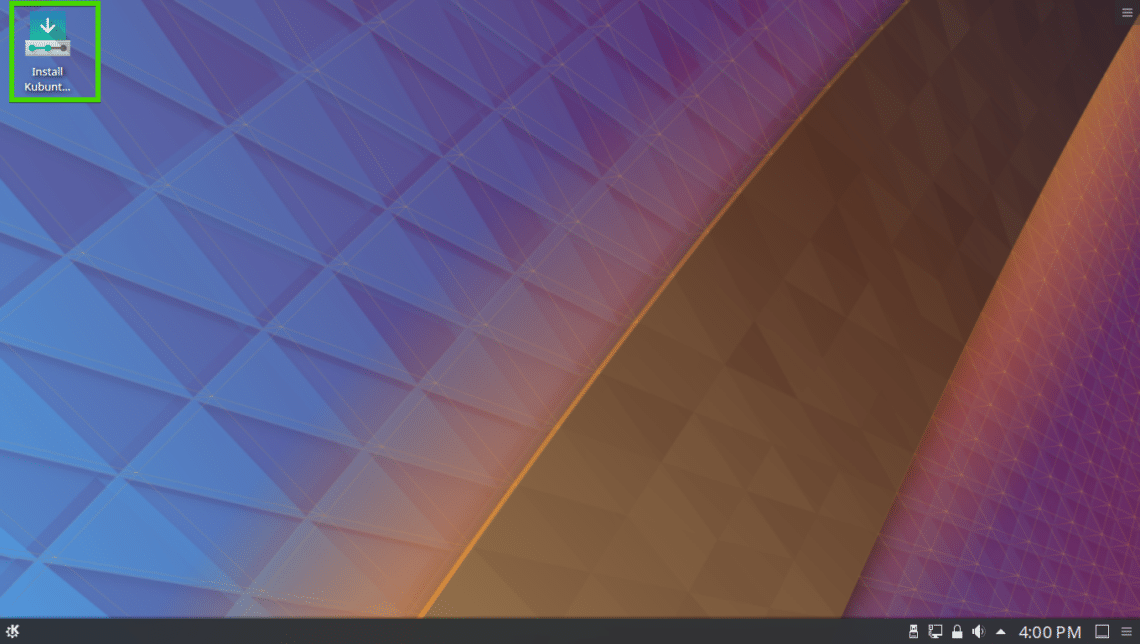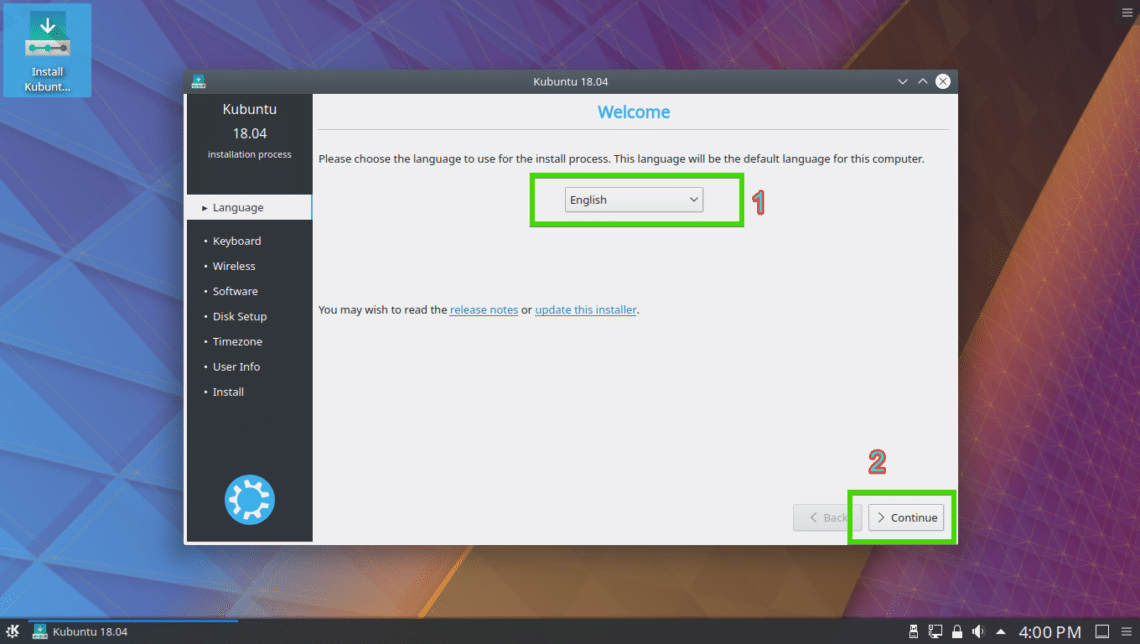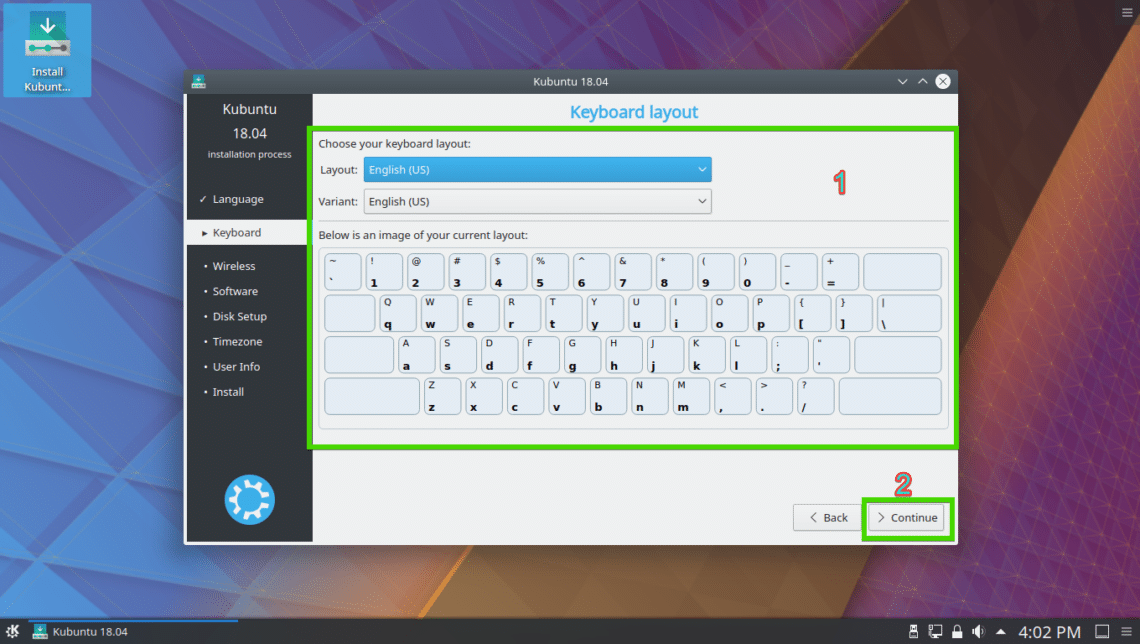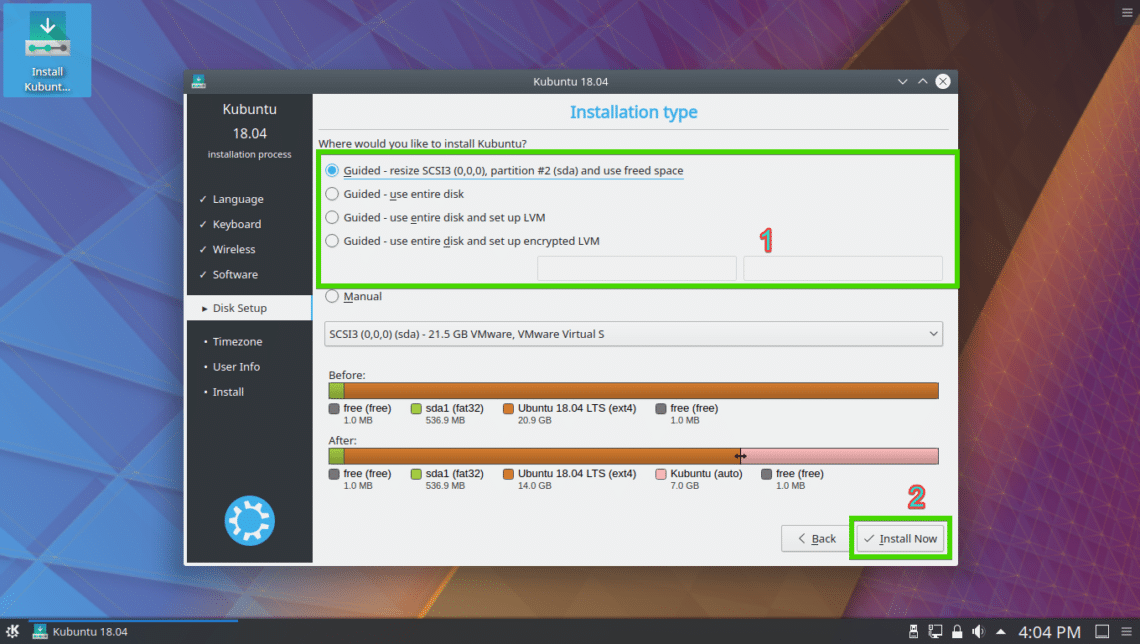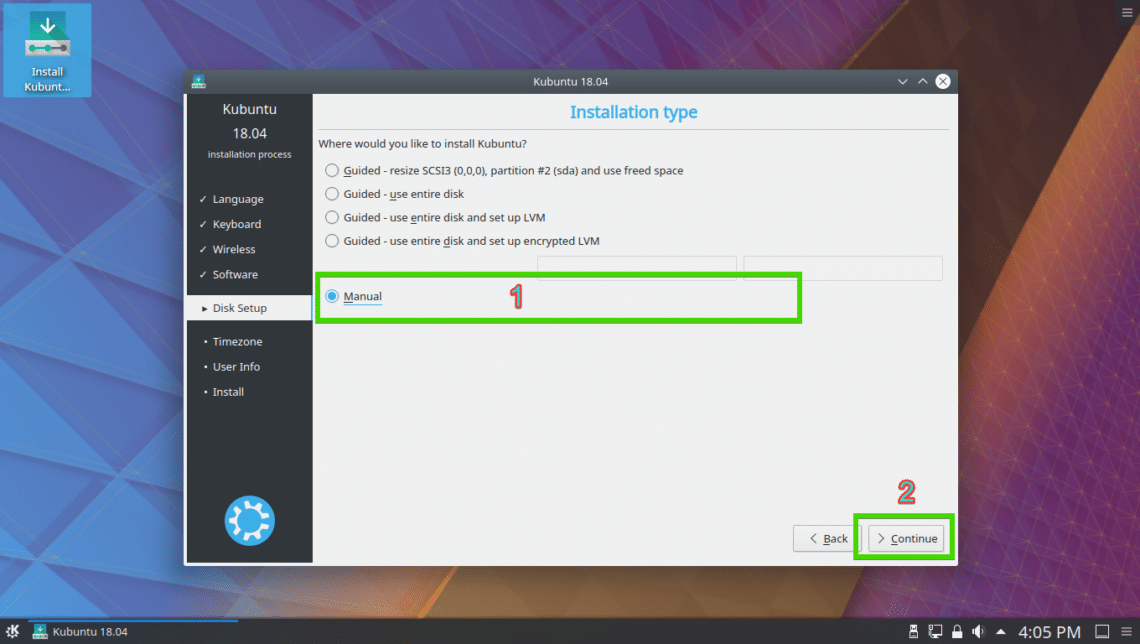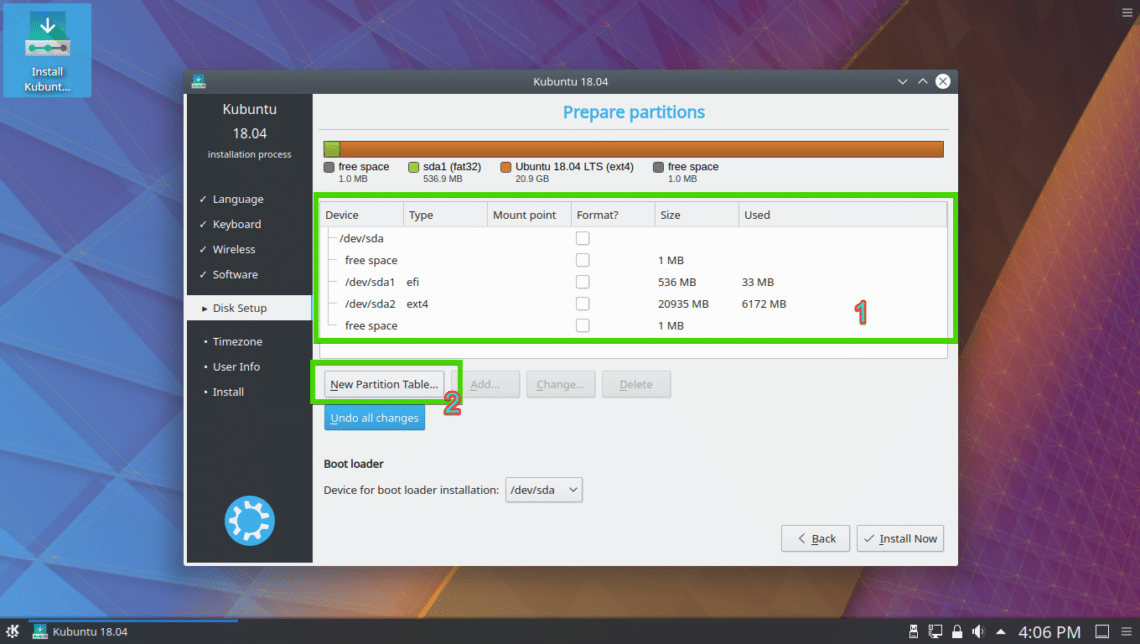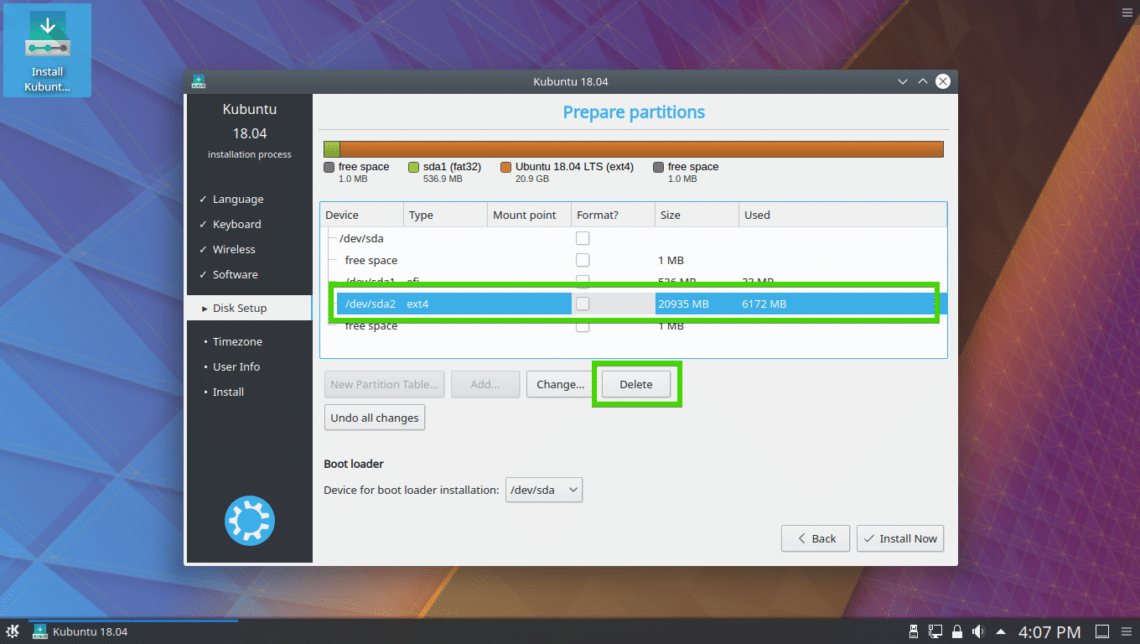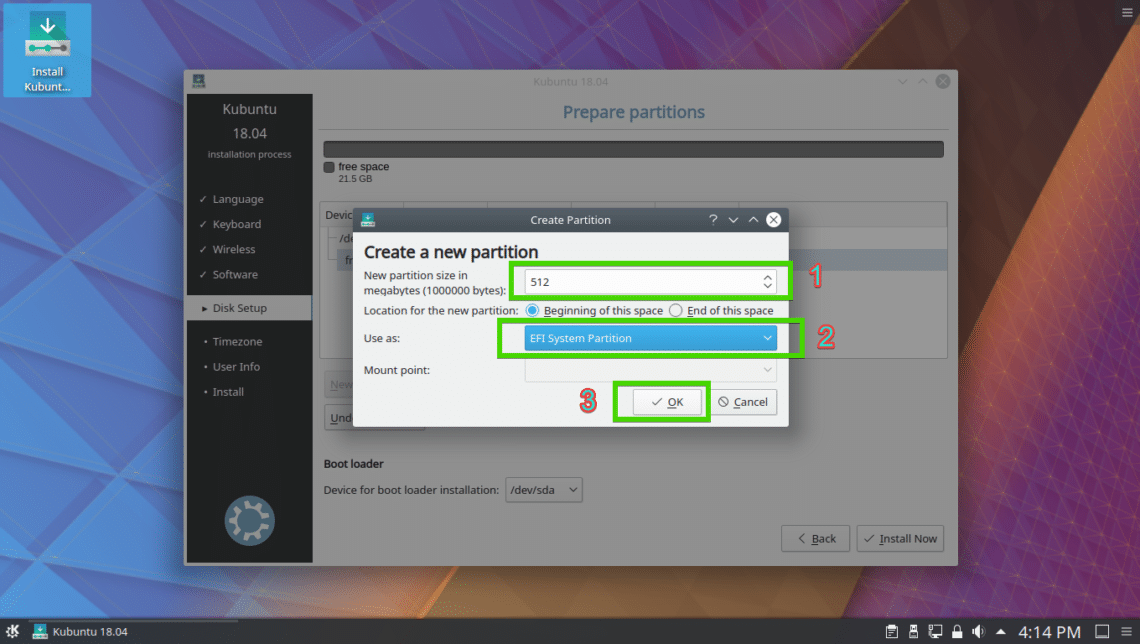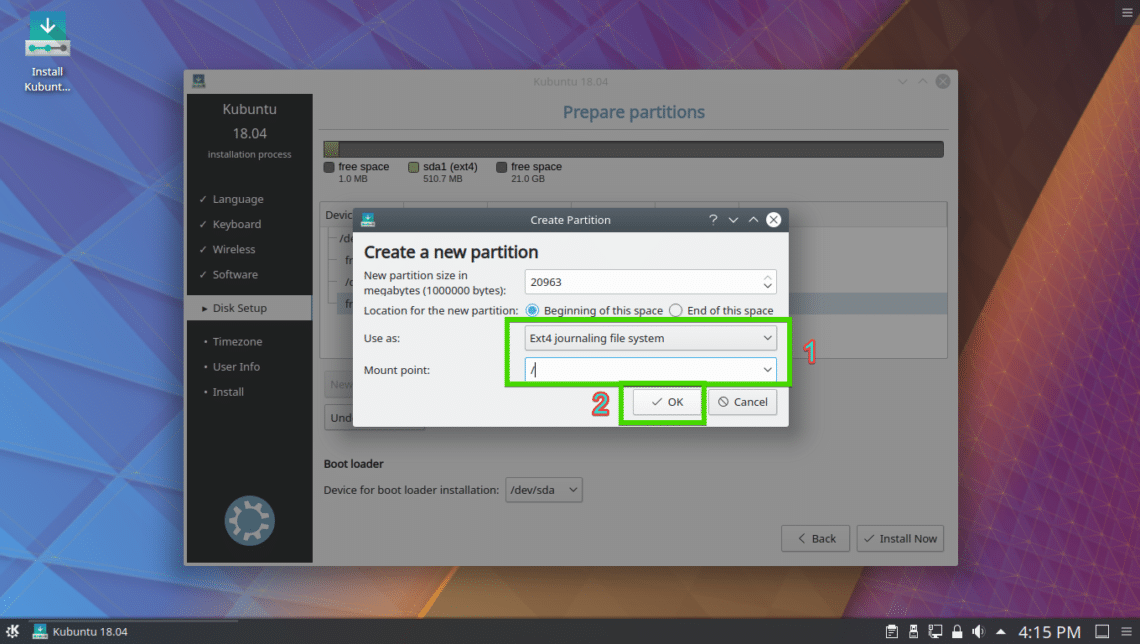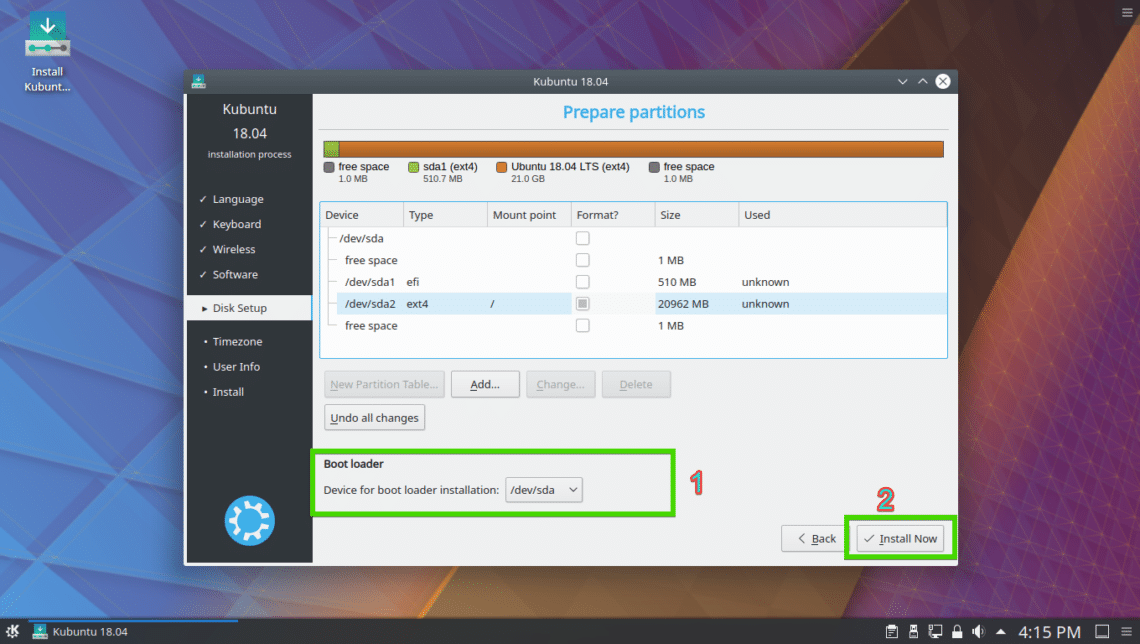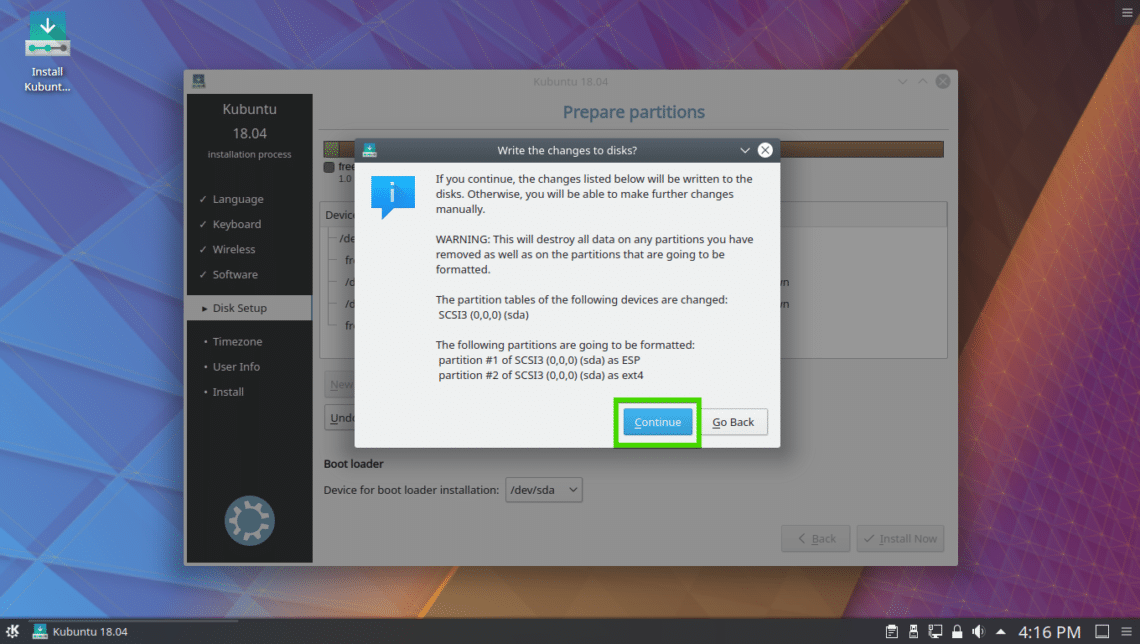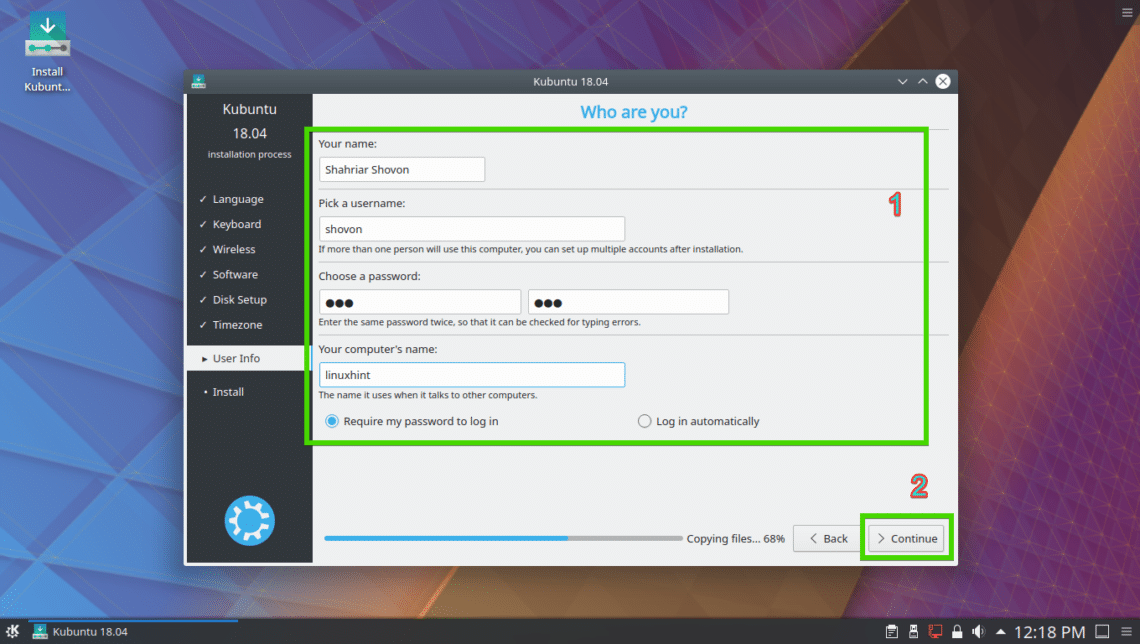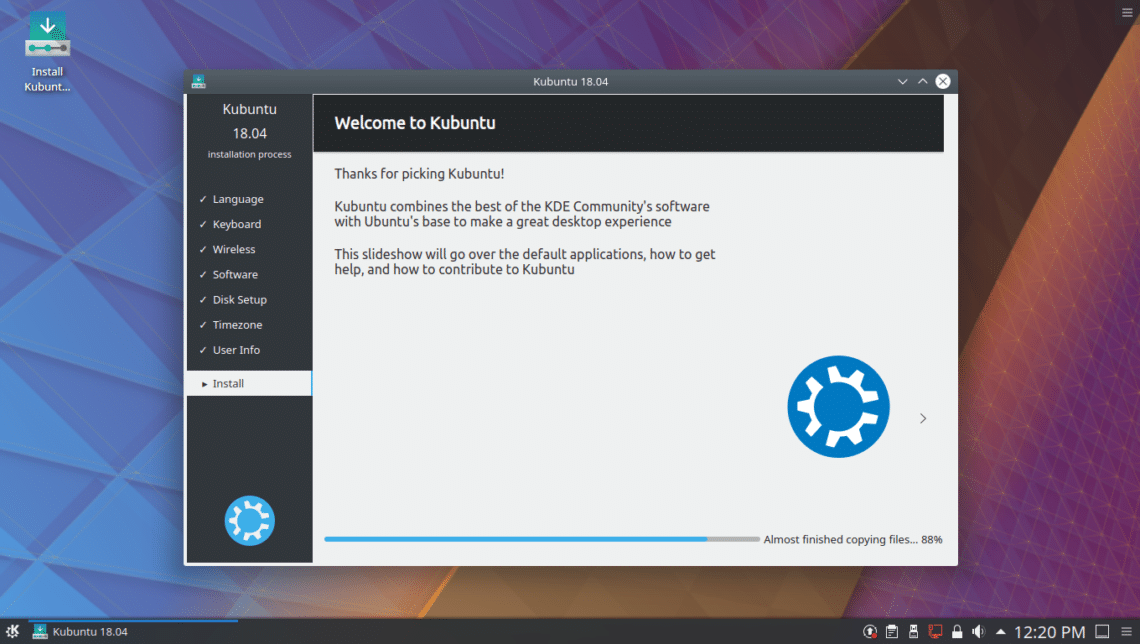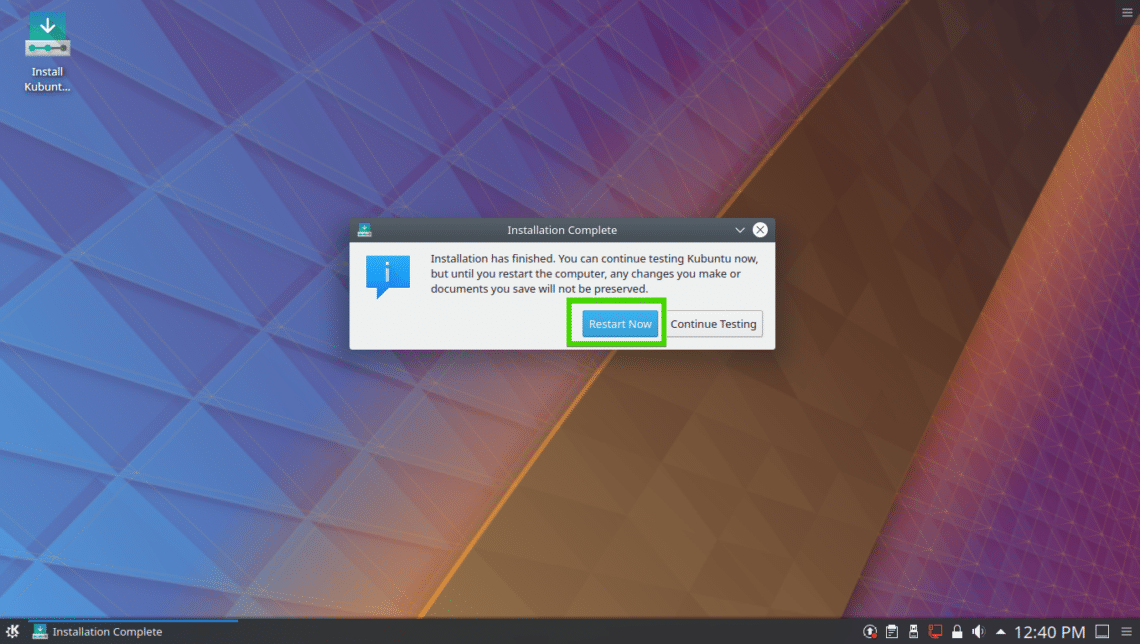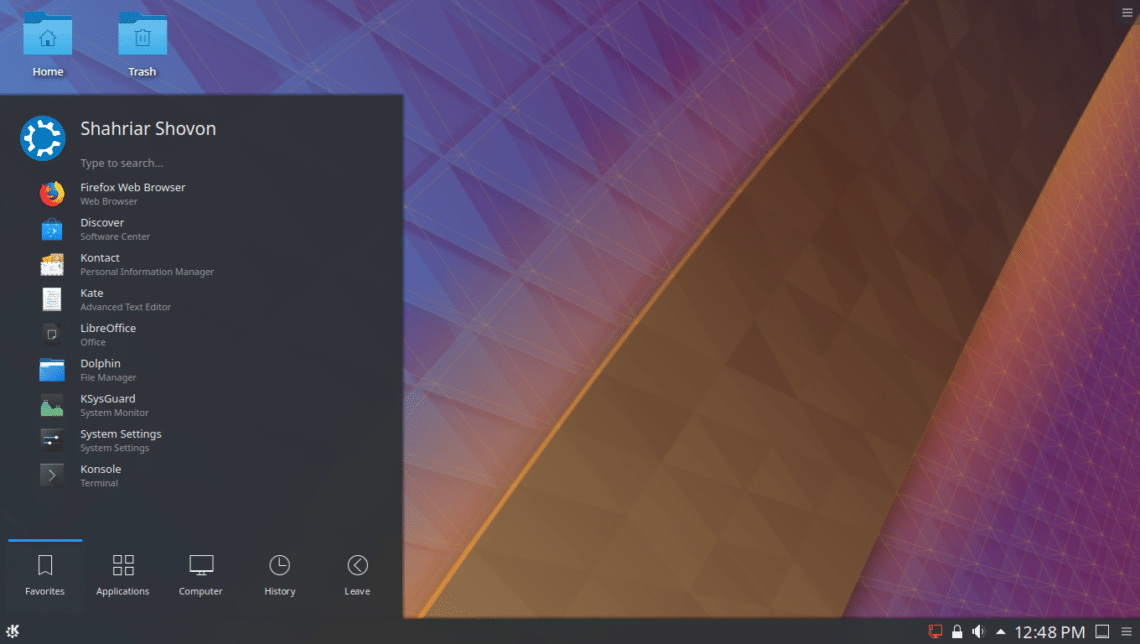In this article, I will show you how to install Kubuntu 18.04 LTS on your computer. Let’s get started.
Downloading Kubuntu 18.04 LTS:
You can download an ISO image of Kubuntu 18.04 LTS from the official website of Kubuntu at https://kubuntu.org/getkubuntu/
Once you visit the link, you should see the following window. Click on either the 64-bit Download or 32-bit Download button depending on whether you want to install the 32-bit version or 64-bit version of Kubuntu 18.04 LTS respectively.
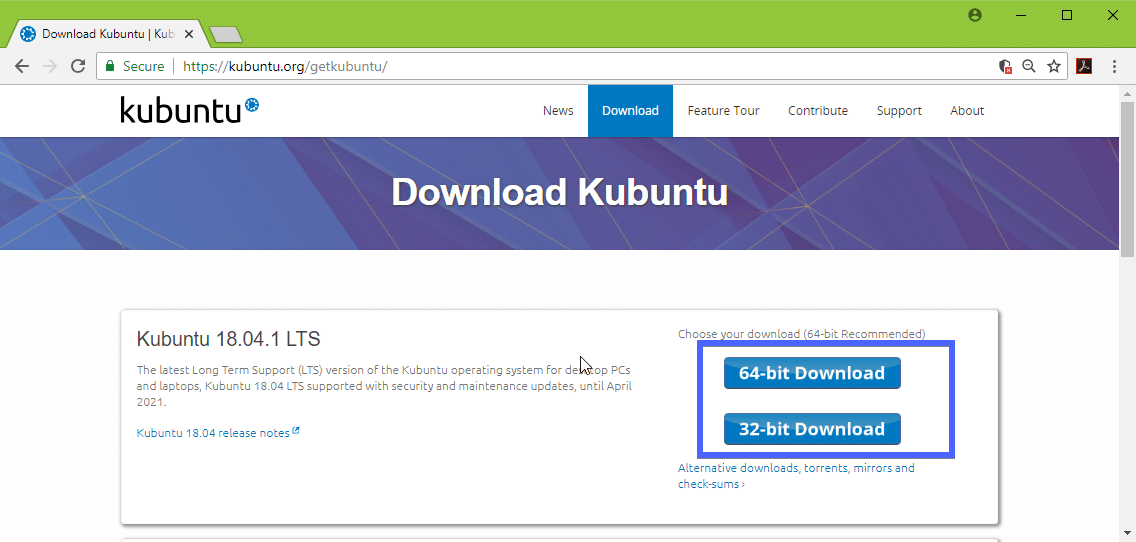
Your download should start and it may take a while to complete.
Making a Bootable USB Stick of Kubuntu 18.04 LTS from Linux:
You can make bootable USB thumb drive of Kubuntu 18.04 LTS on Linux very easily. All you have to do is insert your USB thumb drive on your computer and run the following command to find it’s device identifier:
As you can see, the USB thumb drives device identifier is sdb. So it can be accessed as /dev/sdb
Now run the following command to make it Kubuntu 18.04 LTS bootable:
It should take a while, once it’s done, you should be able to use this USB thumb drive to install Kubuntu 18.04 LTS.
Making a Bootable USB Stick of Kubuntu 18.04 LTS from Windows:
On Windows, you can use Rufus to make bootable Kubuntu 18.04 LTS USB thumb drive.
First go to the official website of Rufus at https://rufus.akeo.ie/ and navigate to the Download section. Now click on the Rufus Portable link as marked in the screenshot below.
Rufus Portable should be downloaded. Now start Rufus and click on No.
Rufus should start.
Now insert your USB thumb drive and click on SELECT.
Now select your Kubuntu 18.04 LTS iso file and click on Open.
Now click on START.
Now click on Yes.
Now leave the defaults and click on OK.
The USB thumb drive will be formatted and all your data should be erased. If you have any important data there, it is time to move them to a safe place. Once you’re done, click on OK.
Rufus is making bootable USB thumb drive of Kubuntu 18.04 LTS…
Once the process is complete, click on CLOSE.
Your USB thumb drive should be ready to run Kubuntu 18.04 LTS Live and install Kubuntu 18.04 LTS on your computer.
Installing Kubuntu 18.04 LTS:
Now insert the bootable USB stick in your computer and select it from your computer’s BIOS. You should see the GRUB menu as shown in the screenshot below. Just select Start Kubuntu and press <Enter>.
You should be booted into the Kubuntu 18.04 LTS Live DVD. Now you can either start the Kubuntu installer or try Kubuntu before installing. I prefer you try it before installing and if everything works, then you can go for the installation.
If you clicked on Try Kubuntu, then you should see the following window. If you like it, then click on the Install Kubuntu icon as marked on the screenshot below.
The Kubuntu installer should start. Now select your language and click on Continue.
Now select your keyboard layout and click on Continue.
Now you can either select Minimal installation to install minimal version of Kubuntu or Normal installation to install the full version of Kubuntu. You can also check Install third-party software for graphics and Wi-Fi hardware and additional media formats to install third part drivers and media codecs. It requires internet connectivity. Once you’re done, click on Continue.
Now you have to select one of the installation type as shown in the screenshot below. If you want to erase your entire hard drive and install Kubuntu, then select any of the marked option and click on Install Now.
If you want to manually partition your hard drive or do dual booting, then select Manual and click on Continue. This is what I will be showing in this article, as this is where most people new to Linux gets stuck.
You may have a partition table on your hard drive. If you don’t need them, you can click on New Partition Table… to create a new partition table.
You can also delete a few partitions to make room for your new Kubuntu installation.
If you do decide to create a new partition table, then you should see the following prompt. Just click on Continue.
A new partition table should be created. Now select the free space and click on Add… to create a new partition.
If you have UEFI enabled motherboard, then create a EFI System Partition of about 512 MB of size first. If you have BIOS based motherboard, then you don’t need this partition. Just create a Root (/) partition instead and give it all the disk space you want.
Now create a Root (/) partition with the rest of the free space.
Finally, the partition table should look something like this. Now make sure your hard drive is selected on the Boot loader section and click on Install Now.
Now click on Continue.
Now select your timezone and click on Continue.
Now type in your user information and click on Continue.
The installation should start.
Once the installation is complete, you should see the following dialog box. Click on Restart Now. Your computer should reboot.
Once your computer boots, you should see the following login screen. Select your user and type in your login password and press <Enter>.
You should be logged into your Kubuntu 18.04 LTS operating system. Enjoy the power and beauty of KDE 5 Plasma desktop environment.
That’s how you install Kubuntu 18.04 LTS on your computer. Thanks for reading this article.


